- Home
- Activities
Activities

Diseases
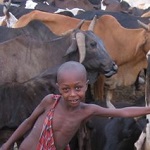
Beef measles
Caused by Taenia saginata, it is a zoonosis that causes few or no clinical symptoms in humans, but greatly reduces the value of infected beef meat and decreases the commercialisation opportunities for small holder farmers where the disease is endemic.
Beef measles
| Name: | Cattle cysticercosis, beef measles |
| Causative agent: | Parasite - Taenia saginata |
| Animals affected: | Cattle |
| Zoonotic: | Yes - but has minor impact on human health. |
| Distribution: | The disease occurs in many parts of the world but is most common where people eat raw beef meat and where human sewage contaminates cattle grazing pastures. |
| Description: | The life cycle of Taenia saginata involves two hosts: Humans are infected with the mature tapeworm, and cattle which are infected with the larval stage (cysticercus). Humans with the tapeworm release parasite eggs to the environment in their faeces, and when the eggs are eaten by the cattle, they develop cysticerci in meat. When humans consume beef containing cysticerci which has not been adequately cooked, it leads to a new tapeworm infection and the life cycle is completed. |
| Impact: |
Humans:
Taeniasis due to T. saginata causes few or no clinical symptoms in humans even if the parasite can grow over 10 meters.Cattle: Measles in beef are a key limitation for small and medium community cattle owners to enter the formal meat industry including selling their animals to feed lot or commercial farms.Economic Impact: (examples) · Detection of infections in beef meat causes economic loss due to decreased price and carcass condemnation, and is relatively common in places like Southern Africa. Meat is either condemned as either unfit for human consumption or it must be frozen for a time to kill the parasite, dropping the price of the meat by 15-20%. |
| Prevention and control: | Several disease control measures are available including improving community sanitation and education. A cattle vaccine has been developed but it is not commercially available. |
| INAND involvement: | Facilitate the deployment of the sustainable and effective control measures to reduce transmission of T. saginata and increase the market opportunities for small holder farmers. |
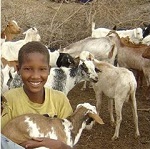
Brucellosis
It is one of the most common global zoonoses. Caused by bacteria of the genus Brucella, the main clinical signs in animals are abortion and infertility. In humans usually produces a chronic disease that requires prolonged treatment and is fatal in 1-5% of untreated cases.
Brucellosis
| Name: | Brucellosis |
| Causative agent: | Brucella melitensis (sheep and goats) & Brucella abortus (cattle) |
| Animals affected: | · Brucella melitensis predominantly affects sheep and goats but can also cause disease in other mammal species. · Brucella abortus affects mainly cattle, but other livestock and wild animals can be infected, with varying susceptibility. |
| Zoonotic: | Yes. B melitensis is the type most frequently associated with human cases, causing Malta fever (also called Mediterranean or undulant fever) and it is one of the most important zoonoses. Brucellosis in humans is also caused by B. abortus and B. suis, resulting in a disease very similar to the one caused by B. melitensis. |
| Distribution: | Brucellosis is widespread worldwide and endemic in Asia, sub-Saharan Africa, some countries of Latin America, the Middle East and the Mediterranean countries. It is a major problem in low income countries. |
| Description: | · In animals, brucellosis causes abortion, stillbirth, placental retention and reduced milk yields in females. Males may develop orchitis (inflamed testes). Hygromas (swollen joints) are sometimes observed in chronic infections. It is highly contagious and is spread through contact with aborted foetuses, vaginal fluids, placenta and milk. · In humans, consumption of raw milk and cheese made from raw milk is the major source of infection. It is also transmitted by direct contact with infected animals, animal carcasses and aborted material. It causes a flu-like febrile syndrome including intermittent and relapsing fever, body aches, joint pain, weakness, headache, weight loss and cough. The disease is generally chronic with different levels of severity. |
| Impact: |
Humans:
Worldwide millions of humans are at risk, especially in developing countries where the infection in animals has not been brought under control, heat treatment procedures of milk are not routinely applied, and food habits such as the consumption of raw milk and poor hygienic conditions favour human infection. In Africa it is estimated that over 85% of goat's milk is consumed unpasteurized.Livestock production: Losses are caused by abortion and later permanently reduced fertility and chronically lowered milk yields in affected animals. In Africa it is estimated to reduce production by 8% per annum.Economic Impact: (examples) · In Uganda it was estimated that 12.6% of informally marketed milk in urban Kampala was contaminated, and the annual incidence rate: 5.8 per 10,000 people. |
| Prevention and control: | Animals cannot be treated against brucellosis. Young animals can be vaccinated against B. abortus and B. melitensis. Livestock vaccination reduces abortions and the risk of transmission to humans but fails to eliminate the disease. Complete elimination at the moment can only be achieved through a strict and long-lasting test-and-slaughter scheme. Such schemes are expensive because they require compensations for the animals that are slaughtered. |
| INAND involvement: | Facilitate the implementation of effective control measures to reduce the incidence of brucellosis. |

Fowlpox
Virus of the family Poxviridae
Viral disease affecting poultry and many other birds. It spreads slowly and is characterised by the formation of sores and scabs on the skin, and sores in the upper parts of the digestive and respiratory tracts.
Fowlpox
| Name: | Fowlpox (FP) |
| Causative agent: | Virus of the family Poxviridae (Genus Avipoxvirus) |
| Animals affected: | FP affects domestic poultry and many other birds |
| Zoonotic: | No |
| Distribution: | Worldwide |
| Description: | It spreads slowly, and is characterised by the formation of sores and scabs on the
skin, and sores in the upper parts of the digestive and respiratory tracts. · In the case of the skin form, the death rate is usually low and affected birds are more likely to recover than those with the sores in the throat. The sores vary according to the stage of development and are usually in the region of the head. · In the diphtheritic form, proliferative sores involving the nasal passages, larynx or trachea can result in difficulty in breathing and death from suffocation. FP causes a drop in egg production for short periods and a reduced growth rate in young birds |
| Impact: |
· FP is one of the most economic important disease affecting chickens. In
susceptible flock death rate may be up to 60% particularly if the mouth and
throat are affected, otherwise disease results in poor growth rate and drop
in egg production. · Experience in Tanzania and elsewhere has shown that there has been increase of FP in village chickens particularly in the areas where Newcastle Disease has been controlled. This has massive knock-on economic effects linked to loss of eggs, reduced growth rates and live chickens available for slaughter or sale. Therefore, the control of FP is necessary to increase productivity of poultry particularly village chickens. |
| Prevention and control: | There is no treatment for FP. Vaccination with live vaccines has long been used
for the control of the disease in the poultry industry and economic losses have
been minimized. Commercial vaccines are not in a format suitable for backyard farmers (large number of doses per vial or very susceptible to high temperatures). Also the nature of village chickens has made it difficult to use the commercial vaccines because of multi-age flocks, and the wing web stab method of vaccination is difficult to use in rural areas constrained by livestock field extension officers. |
| INAND involvement: | Facilitate the development and sustainable deployment of effective control. |
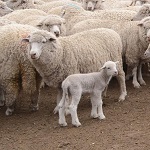
Hydatid disease
Caused by Echinococcus granulosus, a parasite of dogs and other canids that has sheep and other animals as intermediate hosts. In humans it causes Cystic Echinococcosis, that usually manifests as cysts in the liver and lungs.
Hydatid disease
| Name: | Hydatid disease |
| Causative agent: | Parasite - Echinococcus granulosus |
| Animals affected: | Definitive host: Dog and other canids Intermediate hosts: sheep, goats, camels, cattle, kangaroos and others |
| Zoonotic: | Yes, causes cystic echinococcosis (CE) Included in the WHO list of Neglected Tropical Diseases |
| Distribution: | Transmission is most intense in communities where pastoral activities predominate and veterinary services are limited, and where offal from slaughtered animals is accessible to dogs. Highly endemic areas are mostly found in the eastern part of the Mediterranean region, northern Africa, middle East, southern and Eastern Europe, at the southern tip of South America, in Central Asia, Siberia and western China. It is considered an emerging disease in various regions, e.g. the Middle East, central Asia and northern and eastern Africa. |
| Description: | The parasite is host-specific with respect to its definitive hosts (dogs and other canids) which harbour the sexually reproducing tapeworm parasite. Infective tapeworm eggs are released with the faeces, contaminating the environment. Many herbivorous and omnivorous species may be infected as intermediate hosts, after they accidentally eat the eggs and the parasite invades the hosts' tissues and develops into larval stages, most commonly in the liver and lungs. When the offal containing the cysts is eaten by dogs or other canids, they develop the mature parasite completing the cycle. Humans are accidental intermediate hosts through the ingestion of items contaminated with parasite eggs, including contaminated food, water or thorough direct contact with canine hosts. |
| Impact: |
Humans:
· Cystic echinococcosis (CE) in humans manifests as fluid-filled parasitic cysts occurring predominantly in the liver and lungs, although the cysts may occur in any body organ. Commonly, growth of a cyst interferes with the functions of the organ involved, and causes pain. Rupture of the cysts may cause anaphylaxis and death. CE is expensive and complicated to treat, often requiring extensive surgery (2.2% post-operative death rate and 6.5% cases relapsing), and/or prolonged drug therapy which is very difficult in remote areas.Sheep and other animals: · Offal condemnation; potentially causes a reduction in productivity (incompletely defined).Economic Impact: (examples) · The annual costs associated with CE are estimated to be US$ 3 billion, which includes costs for treating cases and losses to the livestock industry. |
| Prevention and control: | CE is a preventable disease. Periodic deworming of dogs, preventing dogs from feeding on carcasses of infected animals, control of stray dog populations, improved hygiene in the slaughtering of livestock (including proper destruction of infected offal), and public education campaigns have been found to lower and, in high income countries, prevent transmission of the disease. However, in spite of efforts to control transmission of E. granulosus in many parts of the world, the disease remains prevalent in humans throughout many regions. There remains an urgent need for new CE control activities and the implementation of improved methods for control for example including vaccination of intermediate hosts, particularly sheep. |
| INAND involvement: | Facilitate the deployment of the sustainable and effective control measures to reduce transmission of E. granulosus and reduce the incidence of cystic echinococcosis in humans. |
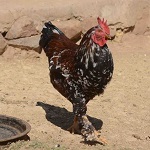
Newcastle Disease
Virus of the family Paramyxoviridae APMV-1
It is a highly contagious disease in many species of domestic, exotic and wild birds. It can cause up to 100% mortality in non-vaccinated birds, and is the most common cause of mortality in village poultry.
Newcastle Disease (ND)
| Name: | Newcastle Disease (ND) |
| Causative agent: | Virus of the family Paramyxoviridae (Genus Avulavirus) APMV-1 |
| Animals affected: | Domestic poultry and wild birds |
| Zoonotic: | A mild form of disease can affect people, causing headaches, flu-like symptoms and mild conjunctivitis, but it is not a serious threat to human health. |
| Distribution: | Strains of the virus are present in most countries |
| Description: | It is a highly contagious disease in many species of domestic, exotic and wild birds.
Clinical signs depend on the strain of the virus and the age and health of the bird.
There are several strains producing broad clinical syndromes:
· Lentogenic or mild: produces mild or subclinical respiratory infection; no nervous signs occur and death rates are usually negligible. |
| Impact: |
Poultry production: Morbidity and mortality can vary depending on the strain and virulence, type of bird, age and susceptibility of the bird. Some types of birds show few or no signs, and carrier state may exist. · Morbidity: Up to 100%Economic Impact: · The global economic impact of virulent ND (vND) is enormous. It affects commercial farmers around the world, and also backyard production. |
| Prevention and control: | Vaccination is routinely practiced worldwide, and it is highly effective. It reduces the clinical signs, but does not prevent the virus from multiplying or shedding. Commercial vaccines do exist, but usually they are not in a format suitable for backyard farmers (large number of doses per vial or very susceptible to high temperatures). In recent years, vaccines have been developed in more appropriate formats, but they still don't reach poor and/or remote communities in a sustainable manner. |
| INAND involvement: | Facilitate the sustainable deployment of effective control measures to reduce poultry mortality due to ND. |
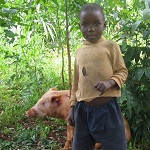
Porcine cysticercosis
Caused by Taenia solium, it is a zoonosis and the most frequent preventable cause of epilepsy in the developing world. Endemic in many countries of the developing world in which pigs are raised free-roaming and sanitation is not adequate.
Porcine cysticercosis
| Name: | Porcine cysticercosis |
| Causative agent: | Parasite - Taenia solium |
| Animals affected: | Pigs |
| Zoonotic: | Yes – causes neurocysticercosis in humans Included in the WHO list of Neglected Tropical Diseases |
| Distribution: | Endemic in many countries of the developing world in which pigs are raised free-roaming and sanitation is not adequate. Includes many countries in sub-Saharan Africa, Asia and Latin America. |
| Description: | The life cycle of Taenia solium involves two hosts. Humans harbour the mature stage tapeworm and pigs are infected with the larval stage (cysticercus). Humans with the tapeworm release parasite eggs to the environment in their faeces, and when the eggs are eaten by the pigs, they develop cysticerci, usually in meat. The life cycle is completed when incompletely cooked meat containing cysticerci are eaten by a human, leading to a new tapeworm infection. Human cysticercosis and neurocysticercosis (cysticerci in the brain or spinal cord) are caused when a person accidentally eats items contaminated with tapeworm eggs (ie from human faeces). This leads to the development of the larval life cycle stage, which would normally occur in a pig, occurring in human tissues |
| Impact: |
Humans:
· Clinical signs will vary depending on the number and location of the cysts. They can cause sudden death.Pigs: · Decreased price & carcass condemnationEconomic Impact: (examples) · Cameroon: Annual cost US$13 million. Average number of DALYS lost was 9/1000 people per year. |
| Prevention and control: | Human cysticercosis has been identified as a potentially eradicable disease. Several disease control measures are available including improving community sanitation and education, pig treatment and pig vaccination. |
| INAND involvement: | Facilitate the deployment of the sustainable and effective control measures to reduce transmission of Taenia solium and reduce the incidence of human neurocysticercosis. |
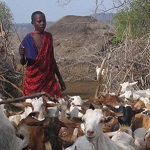
Rift Valley Fever
It is a viral disease transmitted by mosquitoes and potentially other competent vectors. It affects sheep, goats, cattle and other animals. In humans it cases influenza like disease, but occasionally can produce central nervous system complications and death.
Rift Valley Fever
| Name: | Rift Valley Fever (RVF) |
| Causative agent: | Virus of the family Bunyaviridae (Genus Phlebovirus) |
| Animals affected: | Primarily sheep, goats, cattle and camels. It also affects wildlife. |
| Zoonotic: | Yes. Humans are highly susceptible to the RVF virus and may become infected after being bitten by infected mosquitoes or other competent vectors, through contact with blood, other body fluids or tissues during slaughtering, skinning and cutting of infected animals, or by consumption of raw milk or uncooked meat from infected animals. In humans it causes mild to moderate influenza-like disease, with occasionally more serious central nervous system complications and death. |
| Distribution: | RVF is endemic in many African countries. Large outbreaks have also been record in the Arabian Peninsula and some Indian Ocean islands. |
| Description: | RVF is a cyclical disease with variable inter epizootic periods (5-15 years). RVF is a cyclical disease with variable inter epizootic periods (5-15 years). It is a mosquito-borne disease. Signs in domestic ruminants tend to be non-specific. It is characterised by necrotic hepatitis and a haemorrhagic state, but infections are frequently inapparent or mild. The disease is more severe in sheep, cattle and goats, producing high mortality in young animals and abortion in pregnant animals. A number of factors play a role in the occurrence of outbreaks: 1) the circulation of the virus through mosquitos, 2) the mosquito pressure (highly dependent on environmental conditions), 3) distribution of animals vulnerable to increased animal/mosquito contacts, and 4) climatic conditions that favour the mosquito pressure where the infection is present. |
| Impact: |
Animals:
· The susceptibility of different species and breed might vary. Mortality and abortion rates vary between and within epidemics. In Southern Africa mortality rates of 5 to 30%, and abortion rates of 40 to 100% have been reported in sheep, while in Egypt up to 60% of the sheep died, and 80-100% of the sheep aborted during the epidemic of 1977-78..Economic Impact: (examples) · RVF has significant impacts on human health and livestock, but it also induces significant economic losses amongst various stakeholders in the marketing chain. |
| Prevention and control: | The control of RVF has essentially relied on vaccination. While the currently available RVF vaccines have been used extensively, they have several shortcomings (poor immunogenicity, and ability to cause malformation in the foetus and abortion when used in pregnant animals) and several research groups have been working in developing new vaccine candidates that may address a large number of the current challenges, and be suitable for use in currently free regions as well as being included in different contingency and emergency preparedness strategies |
| INAND involvement: | Facilitate the development and sustainable deployment of effective control measures to prevent RVF outbreaks. |
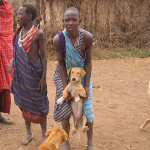
Rabies
Rabies, caused by a virus of the genus Lyssavirus, is one of the most important zoonoses. It is estimated to cause up to 70,000 human deaths per year, mostly children in rural areas. More than 95% of the human deaths due to rabies occur in Africa and Asia.
Rabies
| Name: | Rabies |
| Causative agent: | Virus of the family Rhabdoviridae (Genus Lyssavirus) |
| Animals affected: | All mammals are susceptible to varying degrees. Domestic dogs are the most common reservoir. |
| Zoonotic: | Yes - once symptoms develop, rabies is nearly always fatal. Included in the WHO list of Neglected Tropical Diseases. |
| Distribution: | Strains of the virus are present in all continents with the exception of Antarctica, but more than 95% of human deaths occur in Africa and Asia. |
| Description: | The disease affects domestic and wild animals, and is spread through close contact with infectious material, usually saliva, via a deep bite or scratches. The virus cannot infiltrate intact skin. Dogs are the main host and transmitter of rabies. They are the source of infection in all human rabies deaths in Asia and Africa. Bats are the source of most human rabies deaths in the Americas. Once the virus reaches the brain, it further replicates, resulting in progressive, fatal inflammation of the brain and spinal cord. There are two clinical manifestations of rabies - furious (classical or encephalitic) and paralytic. Furious rabies is most common form of human rabies, accounting for approximately 80% of cases. People affected exhibit signs for hyperactivity, excited behaviour, hydrophobia and sometimes aerophobia. After a few days, deaths occur by cardio-respiratory arrest. |
| Impact: |
Humans:
Canine-mediated rabies is one of the most important zoonosis and is estimated to cause up to 70,000 human deaths per year, mostly affecting people in rural areas.Livestock production: Livestock can be infected when bitten by rabid animals (usually dogs or bats). Cattle with furious rabies can be dangerous. A common clinical sign is abnormal bellowing, which may continue until shortly after death.Economic Impact: (examples) · It has important social costs due to human mortality and high economic consequences due to the losses in livestock and the cost of the implementation of preventive and control measures in both animals and humans |
| Prevention and control: | Rabies is a 100% vaccine-preventable disease. There are very effective vaccines. They contain live attenuated or inactivated virus. Elimination programs are usually based on mass dog vaccination campaigns, where at least 70% of the dog population should be covered in order to break the cycle of transmission. The main challenge is vaccination of dogs (considered the main reservoir), especially in rural areas. |
| INAND involvement: | Facilitate the sustainable deployment of effective control measures to reduce human mortality due to Rabies. |
